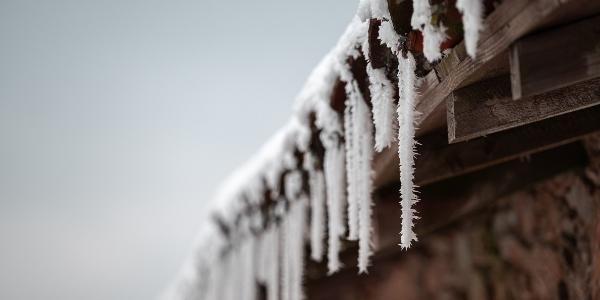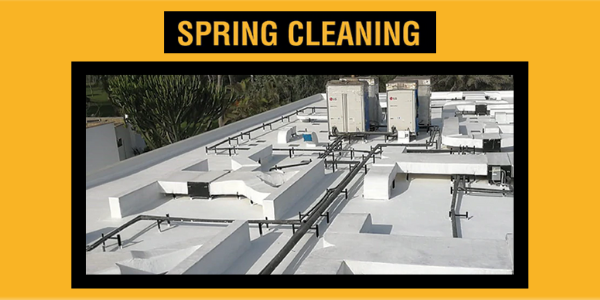Winter Roof Inspection Checklist: 3 Tips

By DECRA Metal Roofing.
Knowing what to look for during a winter inspection can protect a home from structural damage.
Typically, roof inspections occur during the spring and summer months. But, it’s also important to have your roof assessed when the temperature starts to drop. Preexisting conditions that are overlooked during the winter can later result in structural damage, which sometimes leads to expensive repairs and replacements.
During the winter, roof inspections are essential for those purchasing a new property in colder areas. This means you want to know what to look for when evaluating a roof's condition, regardless of whether you are a contractor or homeowner.
Below, we provide an overview of items to look for when inspecting a roof during the winter, as well as DECRA Metal Roofing materials to consider, if a replacement is needed.
1 - Look for interior leaks
An exterior visual inspection might not be possible due to snow or debris, so one of the very first things to look for when inspecting a roof is interior leaks.
Head to the attic or crawl space and look for obvious signs of leakage. Are there yellow or brown stains on the ceiling? What about wet spots in the attic? If the answer is yes, a leak in the roof is likely the issue. Often this happens because water from snow and ice accumulates and melts on a roof, creating moisture under the surface and leaking inside. Once you’ve found where the leak is coming from, you can simply have it repaired. A few of the things you’ll want to look for are:
-
Indications of mold or moisture.
-
Ventilation issues.
-
Wilted decking.
-
Cracks in roof sheathing.
Luckily, there are materials on the market that protect against winter weather better than others. Due to the interlocking nature of the panels, the durability of the metal, and the underlayment used underneath, metal roofing lowers the chance of water working its way into a home, so it becomes nearly impossible when installed properly.
The best part? Unlike asphalt shingles, clay tiles and wood shakes, DECRA roofing products don’t become brittle when exposed to extreme cold, making them an easier option to fix if you encounter an interior leak.
2 - Look for where snow accumulates and ice dams surface
During the winter months, snow is bound to accumulate on a roof in colder climates no matter the material. However, too much snow can add stress to any structure, so it’s important to note where accumulation happens.
You’ll also want to look for ice dams or a ridge of ice that forms at the roof’s eave, which prevents snow from properly draining. Any excess water backing up behind the dam can also cause interior leaks or form icicles in front of the dam, posing a danger to the people and property below.
Gutters also contribute to ice dams when meltwater freezes in a cold gutter and prevents additional meltwater from draining off the roof.
Some homes use snow guards to control the rate at which snow and ice melt from a roof's surface. However, it’s uncommon to use snow guards on DECRA metal roofs because they keep a consistent temperature across the entire roofing area, including the eaves. The benefit to this is that it maximizes the roof’s energy efficiency, which translates to savings for homeowners during the cold (and warm) months of the year.
If you notice ice dams during your inspection, a homeowner can prevent them by having insulation added, and sealing off every possible air leak that might warm the underside of the roof.
Additionally, you’ll also want to make sure gutters are clear when inspecting the roof to avoid added weight from frozen debris. Addressing these trouble spots during an inspection gives you the upper hand by preventing ice dam formation and improving a roof’s well-being.
3 - Look for any signs of damage
If you can safely access the roof and see the actual materials in the winter, you’ll want to inspect the individual shingles, tiles and shakes closely because even the smallest cracks can cause a leak. We recommend having a professional roofing contractor complete this part of the inspection. A few things the contractor will look for are:
-
Materials that appear out of place.
-
Areas where ice can freeze underneath a panel or shingle.
-
Moss growth.
-
Loose panels or shingles.
-
Cracks or splitting.
-
Warped or rotted wood.
If a replacement is necessary, consider stone-coated metal roofing when researching materials. Traditional asphalt roofing materials have an estimated life expectancy of 12 to 20 years. Metal roofs, on the other hand, have a lifespan that is two to three times longer than traditional roofing materials like asphalt, tile and wood.
Year-round roofing options with DECRA
DECRA Metal Roofing can be installed at any point during the winter. This makes our products a more suitable option compared to other roofing materials like asphalt shingles, which are challenging to install at temperatures below 45 degrees as nails shoot through them or become brittle and break during installation.
If the inspection uncovers a series of costly issues, it might be time to discuss a replacement. Fortunately, DECRA Metal Roofing can be installed year-round to withstand the winter elements. To get started, contact a DECRA roofing advisor today.
Have a question? AskARoofer.
Find your local roofing contractor in the RoofersCoffeeShop® Contractor Directory.
Original article source: DECRA












Comments
Leave a Reply
Have an account? Login to leave a comment!
Sign In